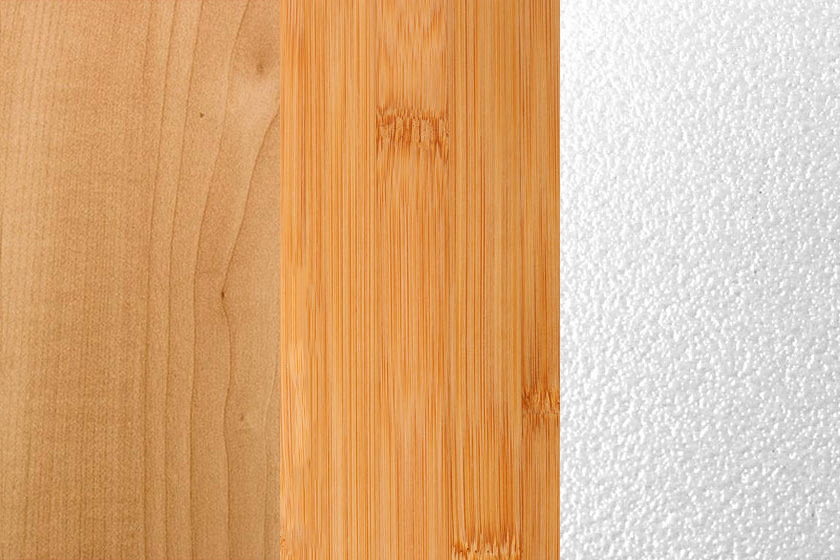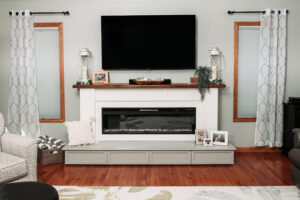Consumers have a wide variety of cutting board choices. You’ve probably heard all kinds of conflicting advice on which kind of cutting board is the most green, the most sanitary, and the least damaging to your knives. So, who’s right?
Plastic
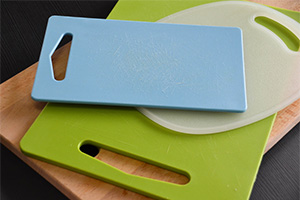
A lot of people believe that plastic cutting boards are the best because unlike wood or bamboo, plastic is not an organic material and is safe to run through the dishwasher. They’re also cheap.
A brand new plastic cutting board is easy to disinfect. However, once knife scars start to appear through use, studies show that plastic cutting boards harbor bacteria. It’s nearly impossible to sanitize a knife-scarred plastic cutting board without using harsh chemicals and abrasives. There are other health concerns as well. Plastic, especially when heated, can leech into your food.
Some plastics are easier on knives than others. However, just because the packaging says “safe for professional knives” or “will not dull knives,” doesn’t necessarily mean it’s true. Harder plastics will wear longer, but at the expense of your knives.
PROS: Variety of colors and styles, inexpensive, dishwasher safe
CONS: Not as hygienic, plastic can leech into food
Bamboo
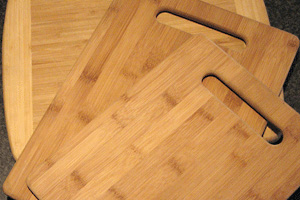
Bamboo is the choice of many environmentalists. A fast-growing hard grass, bamboo is a sustainable, renewable resource that needs no chemicals to thrive or be harvested. It looks super cool and is lightweight, but strong. It’s tight-grained, dense, and easy to clean.
Bamboo is great as a serving board, pizza peel, or kitchen utensils because of its antimicrobial properties. The drawback? Bamboo is about 20% harder than maple, and will quickly dull your knives.
Hardness is not the main issue with bamboo—it’s consistency. Wood has a consistent hardness, whereas bamboo is much harder at the nodes (darker areas) and softer in between. The uneven wear between them tends to shred the edge of your blade, especially if doing a lot of chopping.
PROS: Lightweight, durable, sanitary
CONS: Quickly dull knife edges, not dishwasher safe
Wood
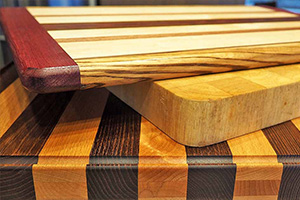
Wood is not only a beautiful, natural material, it’s also very durable and sanitary. The porous surface of wood generates unfavorable conditions for bacteria growth. In addition, wood produces antimicrobial components able to inhibit or limit the growth of pathogenic microorganisms.
When you cut on a wooden cutting board, the wood fibers break and leave a mark—which helps prevent the fine edges of your knives from rolling over and turning dull.
Not all wood is ideal for cutting boards. Maple is the gold standard because it is hard, dense, and close-grained. Other hardwoods like walnut, cherry, birch, and ash are also good choices. Oak, which is a very popular and readily available hardwood, is porous and has a wide grain structure making it less than ideal. Softwoods like pine or spruce are tight-grained, but simply not durable enough.
If you take care of your hardwood cutting board, it should last a lifetime.
PROS: Wears well, easy on knife edges, beautiful, naturally hygienic
CONS: Not dishwasher safe, can be expensive
